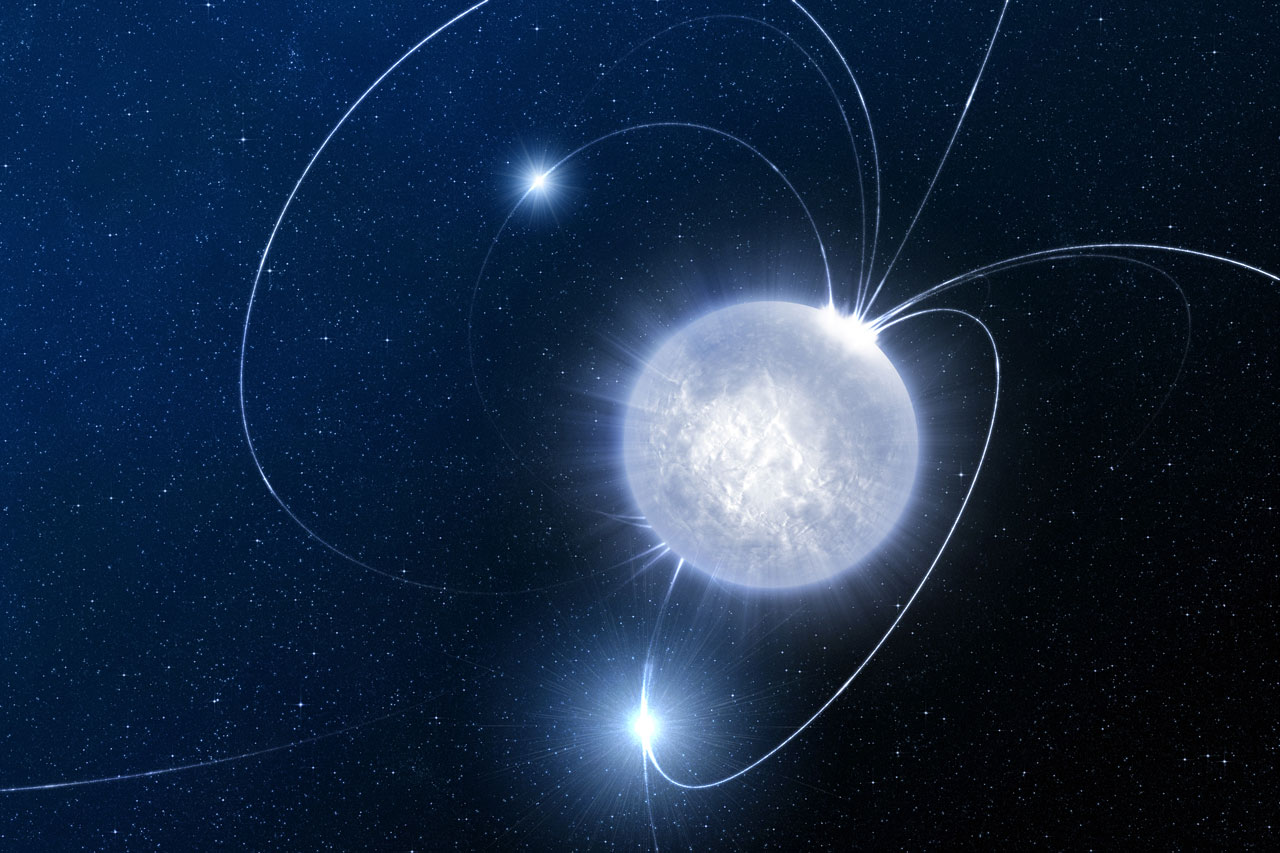
Astronomers Discover New Cosmic Source of Gold Generation: Magnetar Flares
In a groundbreaking revelation that redefines our perspective on the universe’s creation of its rarest materials, astronomers have established that the explosive flares emitted by magnetars—the most magnetically potent stars in existence—are capable of producing heavy elements like gold, platinum, and uranium. This finding, outlined in a study released on April 29 in The Astrophysical Journal Letters, identifies magnetars as the second confirmed cosmic source for r-process nucleosynthesis, the rapid neutron capture process responsible for generating the universe’s heaviest elements.
An Exciting Resolution to an Astronomical Enigma
For more than twenty years, researchers have recognized that neutron star mergers—dramatic collisions between extremely dense, deceased stars—generate the heat and neutron-rich conditions vital for the creation of rare elements through the r-process. Yet, some mysteries lingered. For instance, the detected quantities of heavy elements in various young galaxies appeared disproportionately high to be solely accounted for by mergers, which occur infrequently and much later in a galaxy’s life cycle.
Now, scientists argue that magnetar flares—high-energy radiation bursts from neutron stars with magnetic fields trillions of times stronger than that of Earth—may represent the missing link.
“This marks only the second instance where we’ve directly observed evidence for the formation of these elements,” said astrophysicist Brian Metzger from Columbia University and the Flatiron Institute. “This signifies a significant advancement in our understanding of how heavy elements are produced.”
The Signal from SGR 1806-20: A Concealed Clue Revealed
The pivotal moment arose when a research team, led by doctoral candidate Anirudh Patel at Columbia University, reevaluated data from a prominent cosmic incident: the enormous flare from the magnetar SGR 1806-20, situated around 50,000 light-years away in the Milky Way, which occurred in 2004. Although its initial gamma-ray emissions were well recorded, an atypical, smaller burst detected roughly 10 minutes later remained a mystery—until now.
Patel and their team suggested that this secondary signal corresponds to the energetic signature of r-process elements undergoing radioactive decay, essentially radiating as they transitioned into more stable atomic structures. Their research indicates that this singular magnetar flare could have generated nearly one-third of Earth’s massive heavy metals.
“It’s astonishing to consider that the gold in your jewelry or the rare metals in your smartphone might trace back to one of these extreme cosmic phenomena,” Patel noted.
The Mechanism Behind Magnetar Flares and Element Formation
Magnetars emerge from the collapsed cores of massive stars and represent a distinct category of neutron stars. They boast the strongest magnetic fields observed in the universe. During a “giant flare,” a magnetar’s outer crust can violently rupture, expelling neutron-rich material at speeds approaching a fraction of light speed.
The immense pressure, heat, and surge of free neutrons create ideal conditions for the r-process nucleosynthesis. In these brief episodes, atomic nuclei quickly absorb neutrons more rapidly than they can decay. During the ensuing minutes, these unstable nuclei release energy as gamma rays while transforming into stable heavy elements.
Addressing the Young Galaxy Puzzle
One of the persistent puzzles in astrophysics has been the high concentrations of heavy elements found in relatively young galaxies. Although neutron star mergers efficiently produce these elements, they are simply too rare and delayed by billions of years compared to star formation. In contrast, magnetar flares can erupt significantly earlier and more frequently, offering a convincing explanation for the prominent presence of heavy elements in young galaxies.
Researchers estimate that magnetar flares might account for approximately 1% to 10% of all r-process elements generated in the Milky Way.
Connecting Theory with Empirical Evidence
Interestingly, the team had already theorized the potential for magnetar flares to act as r-process factories prior to linking their model with the 2004 incident.
“The event had been somewhat overlooked over the years,” Metzger remarked. “However, we quickly recognized that our model fit it perfectly.”
Their collaboration with observational astronomers enabled them to interpret the previously enigmatic gamma-ray burst as concrete evidence of new element formation.
Looking Ahead: A New Chapter in Elemental Astronomy
This discovery paves the way for new exploration in tracking and comprehending the cosmic origins of the raw materials that not only constitute our planet but also much of our technology and even our biology. While hydrogen and helium originated from the Big Bang, and carbon and oxygen were formed in stars like our Sun, the heavy, coveted metals we desire are birthed in cosmic upheavals.
NASA’s forthcoming Compton Spectrometer and Imager (COSI) mission, set for launch in 2027, intends to identify high-energy gamma-ray signals with unparalleled resolution. Scientists are optimistic that it will detect future magnetar flares.